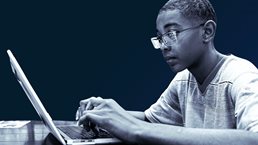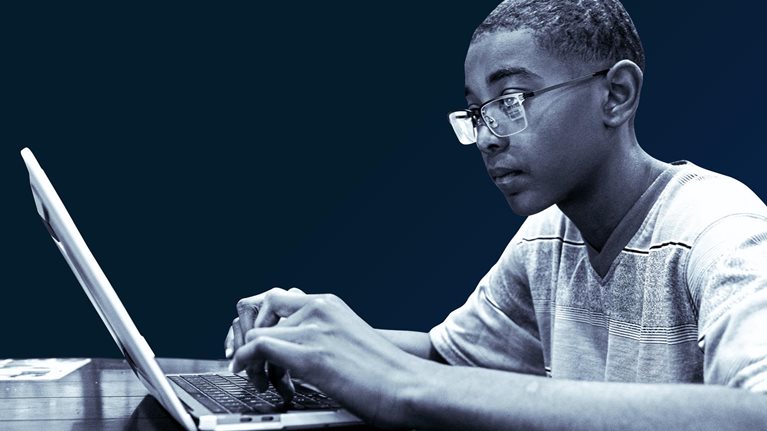In much of the Northern Hemisphere, it’s back-to-school season. But this year’s preparations are fraught with added anxiety as educators, public-health officials, and parents try to balance the need to reduce the spread of the coronavirus with the desire to get students into more productive learning environments.
The first priority of every school system must be to reduce virus-transmission rates and protect the health and safety of students and staff. System leaders at the national and local levels must adapt their strategies to reflect the level of transmission in their communities. In a fast-moving pandemic, that’s no easy task. Circumstances change weekly, and even countries with low case counts today should be vigilant and ready to change course in the event of a resurgence.
At the moment, there is no common template for determining whether to educate students remotely, bring them back into the classroom, or create a hybrid model that combines both. In the United States, for example, more than three-quarters of the 50 largest school districts have decided to start the school year remotely as a result of continued infections. Kenya recently announced that its schools will stay closed until 2021, while officials in the Philippines have vowed to keep schools closed until a vaccine becomes available. In the Netherlands and other parts of Europe, by contrast, many schools plan to resume teaching all students full time in the classroom.
In every model, the first step is to get the health protocols right. Once officials have a clear sense of what’s required to reduce transmission rates and save lives, they can develop robust models to minimize further learning delays and support students throughout the crisis. In this article, we focus not on the health side, which is being addressed by public-health officials, but on the learning imperative. For many students, a full-time return to the classroom won’t be safe for some time. It’s therefore important to understand three lessons to get remote and hybrid learning right (see sidebar, “Tools to help educators around the world navigate the pandemic”).
Lesson #1: Differentiate by the level of need and capability
Educators have long understood the value of tailoring curriculums and classroom environments to the needs of different age groups, students, and school systems. There is similarly no one-size-fits-all strategy for determining the optimal model for learning in the COVID-19 crisis. What we do know, from our own analysis and data tracked by UNESCO and NWEA, is that certain groups of students have suffered greater setbacks and will continue to face more obstacles in remote-learning environments. In areas where disease transmission is under control and administrators can resume classroom learning, these students need to take priority.
Opening schools should not be an all-or-nothing proposition. Here are some potential priorities.
Focus resources on students experiencing the greatest challenges
Remote learning is especially tough on students who also have to deal with challenges such as learning disabilities, economic hardship, or unstable home environments. Many of these students will struggle to thrive in a remote environment where they lack hands-on guidance, emotional support, and access to technology.
Even when schools are mostly shut, there is a strong case to be made for creating a physical environment where these students can learn (Exhibit 1). The challenge, of course, is how to offer in-person learning opportunities to vulnerable students without putting them or their families at risk. Prioritizing the small number of students most in need of in-person instruction makes it possible to have smaller class sizes—which makes it easier for students to follow distancing and sanitation protocols that reduce the spread of the virus. During the first wave of COVID-19, that strategy enabled the United Kingdom to continue educating children of essential workers and those with child-protection plans or special needs in the classroom, without experiencing meaningful outbreaks in schools. If it isn’t possible to bring disadvantaged students safely back to school, significant resources should be devoted to them so that they have the devices, internet connection, and teacher support needed to learn at home.

As schools reopen, prioritize elementary for in-person instruction
Remote learning has been particularly challenging for elementary-school students. Younger children need a level of guidance, social interaction, and tactile-learning opportunities that are difficult to replicate in an online classroom. They are also less able to focus on remote classes for long periods, so caregivers must take on the time-consuming task of actively helping them learn. In most cases, that task falls to women.
In fact, closing elementary schools proved to be especially devastating for working mothers. As our colleagues pointed out in a recent report, the increased burden of unpaid care imposed by the pandemic is a major factor in women’s rising level of unemployment. The societal consequences could be profound: forcing women to reduce their hours or leave their jobs and possibly delay the economic recovery. Other parents simply can’t afford to quit their jobs and may feel forced to leave their young children in unsafe situations. Hybrid models that combine remote and in-person learning don’t fully address such issues. School systems should therefore prioritize finding solutions that get these children back in the classroom full time as soon as health conditions allow (Exhibit 2).

Although the risk of infection among young children is real, it can be managed if administrators enforce vigorous health safeguards and protocols.1 Younger children are much less likely than older people to experience severe complications from the coronavirus.2 Studies from South Korea,3 Australia,4 China,5 and elsewhere suggest that children under ten are also less likely to transmit the virus. The risk of infection for teachers can be mitigated by creating small cohorts of students, enforcing screening, handwashing, and other safety protocols. That said, no group is free from risk. All the more reason to follow strict health protocols and allow at-risk teachers to work from home.6 Students living with vulnerable family members can be given a remote-learning option.
Would you like to learn more about our Public & Social Sector Practice?
Several countries have adopted the approach of opening elementary schools while tending to keep older students in remote-learning environments. Indeed, European countries such as Denmark, Germany, the Netherlands, and Norway brought elementary-school students back to schools while national infection rates continued to fall.7 In countries or states that rushed to open high schools at the same time as elementary schools, and did not put adequate safeguards in place, infection rates soared and schools had to be closed again.
Design programs to fit the local context
Although educators strive to create an ideal learning environment for every student, the realities of budgets, time, and talent constraints require a dose of realism. Some school systems lack the digital infrastructure, resources, or local expertise to roll out online learning. For them, the ideal remote-learning model may combine use of the mass media, simple phone-messaging apps, and paper handouts (Exhibit 3). More than 30 countries are using radios for remote learning, while twice as many are using television.8 Gambia, for example, used donor funding to distribute solar-powered radios across communities that lack electricity and broadband access. Morocco repurposed its sports channel to broadcast educational content.

Conditions can vary widely within the same school system. Rural schools may have choppy internet access but sufficient physical space to bring back all students. Urban schools may have more and better digital coverage but less space. Administrators can plan multiple distribution channels to ensure that every student can access learning.
Lesson #2: Design systems specifically for remote and hybrid environments
Remote and hybrid learning are more than just digital versions of the classroom. When the pandemic struck earlier this year, many educators had little choice but to move existing classes online. Now we have the opportunity to design better solutions to maximize student learning in remote and hybrid settings.
Start by defining the optimal remote-learning experience for students
Designing an effective remote-learning system starts with a research-backed understanding of the amount and mix of activities students will experience. School systems should first determine the appropriate number of learning hours each day and the proportion of those hours spent online for each age group. The split between synchronous learning, with students taught together in real time, and self-paced, asynchronous learning will vary as students mature. So will the mix of large groups, small groups, and one-on-one instruction. For younger students, educators may wish to limit total screen time to a few hours a day9 and build in more small-group instruction and time supervised by adults (Exhibit 4).

Anchor around the teaching value chain
At the most basic level, all teaching follows an iterative process that we call the teaching value chain (Exhibit 5). Starting with direct teacher instruction for students, it continues with providing students an opportunity to explore content through experimentation, discussion, guided practice, and independent work. Teachers then assess what students have learned and what they are still struggling with—information that informs the next round of instruction and exploration. To develop effective remote- and hybrid-learning systems, educators can be trained in how to optimize different platforms so that they implement each element of that value chain effectively. Although this can take a variety of forms, six hours of videoconferencing isn’t likely to be one of them.

For hybrid learning, this spring’s default model was splitting classes between two cohorts and providing simultaneous live instruction across both at the same time. Denmark, for example, divided elementary-school classes into half—one cohort remote, one in the classroom. Teachers provided math and language instruction to the live cohort while the remote cohort dialed in. Some Chinese schools similarly split up classes but kept both on site: teachers provided instruction across both cohorts through a live video feed, switching classrooms periodically. One advantage of this model is simplicity, as teachers need minimal retraining and can stick with existing lesson plans. However, it’s often hard for remote students to follow a lesson that is also being provided to a large group of in-person students. Other models enable teachers to provide more focused small-group support to the in-person cohort, which alternates to give students some face time in the classroom.
In a traditional homework model, teachers provide instruction at school and students practice at home, either online or through traditional workbooks. In a “flipped classroom” model, students learn new ideas by watching prerecorded videos and then coming together as a class to complete exercises and assignments, with the teacher acting as a coach. In an asynchronous hybrid model, students experience a mix of learning activities at school and at home. When they meet in person, teachers assess their understanding of the remote content and then provide further instruction, practice, and feedback on new material. When they are remote, they work independently through asynchronous content.
Engage students with variety and reduced complexity
Several hours of straight videoconferencing will probably cause fatigue, but logging into different platforms at 20-minute intervals can be equally ineffective. The best virtual schools limit live videoconferencing sessions to 30 or 45 minutes and follow up with independent work to reduce fatigue and free up teachers to provide small-group and one-on-one coaching.
It’s tough to engage students online. Pop quizzes, emphasizing conversations over lectures, and cold-calling students for responses can help. Single-sign-on software can reduce complexity and the strain of managing passwords. Common lesson planning by teachers within grade levels for elementary-school students and within subject groups for secondary-school students can harmonize approaches. Whatever approach a school takes, the best programs don’t jump immediately into content; they spend time teaching students how to use the learning tools and platforms and explaining why the school is using them.
Consider new teacher-allocation models
The rise of remote and hybrid learning has created a need for new teaching models. Some school systems are hiring new virtual-learning teams to develop and provide high-quality virtual instruction to students who choose to stay remote, and using in-person teachers for in-person learners. Others have individual teachers provide both remote and in-person learning for groups of students to maintain consistency and relationships, which are especially important for younger students. To relieve the burden on teachers who must prepare both in-person and remote content, these systems often give teachers a prep day when all students are remote, thus reducing total in-classroom time for students. Other systems are adopting or adapting existing team-teaching models: some teachers provide in-person contact, others handle the remote instruction across the same class of students.

School-system priorities in the age of coronavirus
In all systems, creating new roles may be valuable. For hybrid learning, additional classroom aides could be needed to supervise students who cannot be in the same classroom as their teachers because of physical-distancing constraints. For remote instruction, “learning navigators” may be required to help students, teachers, and families use technology effectively.
Test plans using day-in-the-life-of (DILO) simulations
Once school systems have a plan, they can stress-test it by mapping out a typical day for students.10 How will students log on to show attendance, for example? How will they know what time their videoconference sessions start, who will be teaching, and which classmates will join? Educators can then ask questions to identify and fill gaps in the plan. What if a student’s internet goes down during a remote-teaching session, for example? Will it be recorded so that they can catch up later? What if a parent is not around to help them log in? Will there be a way for them to reach a teacher for help? A similar process can be used to map out teachers’ DILOs as well.
Lesson #3: Relationships are the foundation of learning
Schools are more than places for learning. They are the centers of their communities, playing critical roles in providing nutrition and ensuring the physical safety, mental health, and social and emotional wellbeing of students. As school systems roll out their remote- and hybrid-learning plans, they must ensure that they are not only building trust with teachers, parents, and students but also developing plans to help teachers build the kinds of relationships with students that encourage learning.
Teachers need to feel safe and equipped to teach
As the frontline professionals in the classroom, teachers should play an integral role in designing sustainable models for remote and hybrid learning. In Norway, where teachers’ unions were involved at the federal and local level in developing the health safeguards required for a return to the classroom, buy-in and turnout were high among teachers. At the local level, school systems and leaders need to invest significant time in listening to the concerns of teachers and working jointly with them to create solutions. School systems can also make investments to train teachers so that they provide remote and hybrid instruction effectively.
Parents are part of the solution
One side effect of the recent school shutdowns is that parents have become more engaged with their children’s education. As educators bring students back to school for remote or hybrid learning, they can encourage that effort. Each school might commit to regularly connecting one-on-one with families to understand what is working, convey information about the curriculum, and address specific challenges. Simple tips and tricks for parents can make a big difference: for example, disabling notifications and locking down the devices students use for schoolwork to restrict access to nonlearning apps can transform online learning from a battle against distractions into a productive learning experience.11
Students must feel safe and equipped to learn
Many students will be returning to school with some degree of stress. Some will have lost family members. Others may be dealing with the hardship of having their parent lose a job. Along with being exposed to warnings about the virus, students are becoming more aware of systemic racism, climate change, and other issues that can add to a general state of anxiety. Although it’s important to assess students’ academic status and try to catch up on lost learning, educators must focus first on rebuilding relationships and a sense of community. That effort will pay dividends over time, and can be integrated into remote settings through mindfulness or wellbeing checks, as well as a targeted curriculum. The BARR model, for example, provides tools to help teachers address the emotional, social, and physical needs of their students in every interaction with them; creates close cohorts of students; and provides weekly lessons on building relationships.12 The best teachers already tend to focus on the whole child. A school system can try to bring this practice to all students.
All this may seem daunting, especially in light of reduced budgets and an ongoing pandemic. In the United States, the School Superintendents Association estimates that bringing students back to classrooms safely could cost a midsize district $1.8 million. When factoring in other costs, such as hiring more staff and addressing learning loss, the Council of Chief State School Officers suggests that the national bill could top $245 billion.13 Meanwhile, many school systems already face severe budget shortfalls at a time of contracting state budgets.
To ensure a more equitable future, we must act together to overcome these difficulties. As educators make the necessary investments, they can use this difficult time as an opportunity to build a better educational system for the future.

